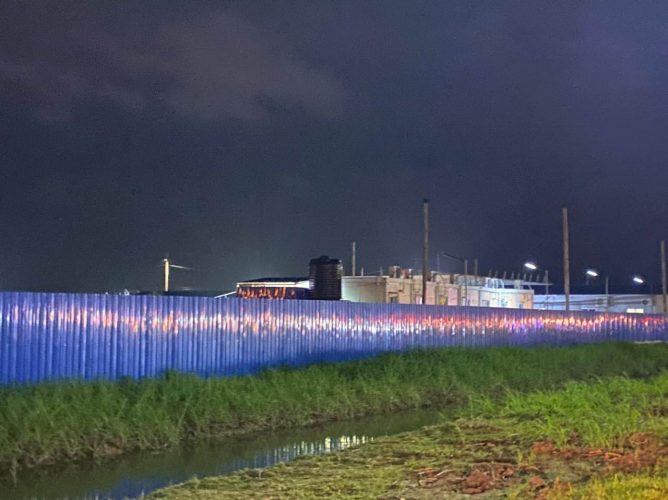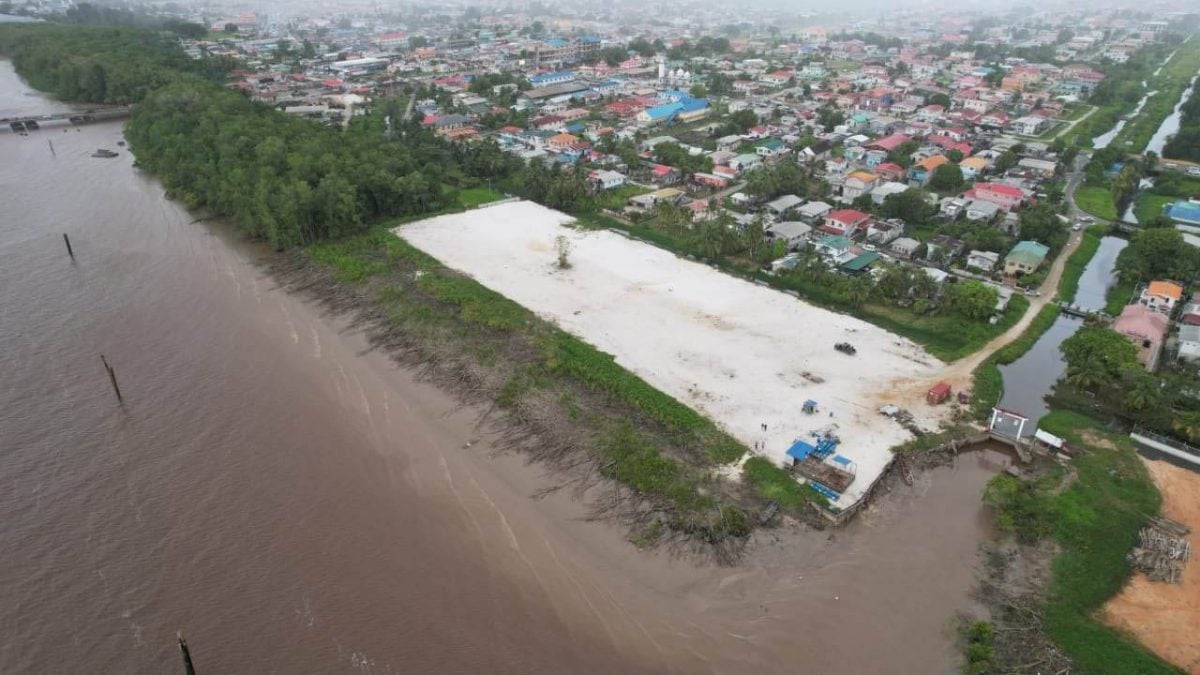With the supervisory firm for the New Demerara Harbour Bridge on site on the West Bank Demerara (WBD) and the commencement order issued last week, work has officially begun by Chinese company, CRCCL on the highly anticipated crossing scheduled for completion in 2024.
“The site office has been completed, the supervisory firm has now been properly situated on site… the commencement order has been issued and the instructions and approvals of physical work have been given,” Minister of Public Works, Juan Edghill, told Stabroek News yesterday when asked for an update.

He explained that the Italian supervisory firm, Politecnica, which last year had won the tender it had bid for in partnership with SKRN Engineering to overlook the project, was in the country but was working out of the Minis-try of Natural Resources’ office. Now that the construction of the office site has been completed at the WBD location, the company has moved there to have a 24-hour presence to supervise works.
“The consultant is there and will have that all-round oversight,” Edghill added.
Politecnica had bid last year along with seven other companies for the contract to supervise works on the estimated US$250 million fixed location bridge that will replace the current one that has been operating since 1976.
And while the company’s office will be on the WBD side of the project site, mobilisation works continue on the East Bank of Demerara on the property rented from Mohammed’s Enterprise by the Chinese firm.
Edghill explained that the countdown to the two-year delivery date began when the commencement order took effect and that it is expected that the project will be completed by the end of 2024.
However, weather and other natural occurrences that could cause delays are not counted in the time period.
The contract to build the estimated US$260 million bridge was signed in May of last year between the government and China Railway Construction (Caribbean) Company Limited (CRCCL). This was after months of technical and financial negotiations with the most responsive bidder – China State Construction Engineering Corporation (CSCEC) – fell through.
CRCCL and their partner, China Railway Construction Bridge Engineer-ing Bureau Group Company Limited, who tendered for the project in a joint venture, were then selected.
In December, the Minis-try of Finance announced that government had completed the electronic signing of a loan agreement with the Bank of China for €160.8 million (US$172 million) for the building of the bridge. It did not give an explanation regarding the financing model, although it was the first time this aspect of the agreement was made public.
Senior Minister in the Office of the President with Responsibility for Finance, Dr Ashni Singh, later explained that the loan formed part of the financing model proposed by the Chinese contractor.
“The $260 million signed last year was for the EPC (Engineering, Pro-curement and Construction) contract. The loan agreement that was signed last week is now the financing agreement, pursuant to the proposal made by the EPC contractor in their bid to mobilise bank financing through the Bank of China for the project,” Dr Singh had told the Stabroek News.
While the two-year construction timeline for the new Demerara Harbour Bridge insisted on by the government will remain, through negotiation with CRCCL, the US$25,000-per-day penalty for going past the date has been reduced to US$15,000.
Government had put in the draft contract documents that it wants the bridge to be built in two years and that for every day outside of that timeframe, a US$25,000 penalty would be incurred. “Capital cost increases if completion is projected to take beyond 2 years – imputed penalties; [US$25,000.00] per day,” the document had stated.
Sources had told Stabroek News that bidders were concerned about the rigidity of the terms, but when government later met with prospective bidders, none of them had raised those issues.
Asked the reasons for the lowering of the penalty, Edghill had explained that as part of the strategic bargaining process between the two sides, government understands that “you don’t get everything” and compromised on lowering the sums but keeping all the other terms.
He was quick to point out that the contract still carries a stiff penalty clause and that government would be holding the contractor to the signed agreement.
And last week, Minister of Housing and Water, Collin Croal, met with several residents of Peters Hall, East Bank Demerara, whose residences fall within the project alignment. To make way for the new infrastructure, close to twenty structures will have to be relocated, a release from his ministry had stated.
Croal, who also engaged residents on Friday afternoon, had reassured them that the necessary assistance will be provided to ensure a seamless transition.
The relocation and resettlement process is being facilitated through the Community Development Department of the Central Housing & Planning Authority which has been engaging residents for some time.
It is estimated that construction of the new DHB project will last for two years. The bridge will be 2.65 kilometres long with a driving surface width of 23.6 metres, to accommodate four lanes. The high-span fixed bridge will fall in the vicinity of the current location and terminate at Nandy Park on the East Bank of Demerara. “The new design of the Demerara Harbour Bridge will not require opening or retraction to allow for maritime traffic and will be built with a life span of at least 50 years,” the bidding document states.
Controversy has dogged this project after the Environmental Protection Agency refused to mandate that an Environmental Impact Assessment be done.




